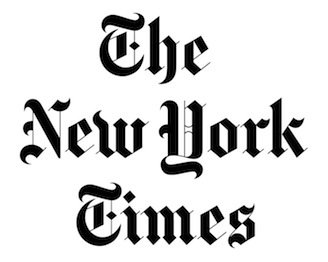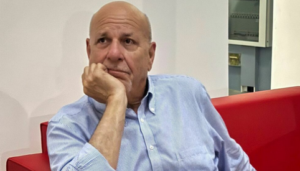di Elisabeth Rosenthal
I GET why Americans are wild about Eataly, the cavernous emporium of Italian gastronomy that opened in New York City in 2010, and in Chicago last year. Where else in the United States, under one roof, can you select from more than a dozen varieties of perfectly sliced prosciutto, a loving selection of Italian wines and olive oils that are hard to find in the United States, as well as the perfect Romanesco broccoli, an odd cone-shaped vegetable that is actually related to cauliflower?
But I was more than a little surprised on my recent trip to Rome, where I’d lived for several years, to see city buses bedecked with slick advertising for Eataly Roma. Could there really be a market for high-priced and sometimes slightly Disneyfied versions of Italy in its very capital? After all, Rome is a city filled with divine food: bread shops, salumerias, cheese shops, wine shops and gelaterias. It seemed as strange as building a reproduction of the Empire State Building in New York.
Eataly, the concept, was the brainchild of Oscar Farinetti, its founder, and the original store opened in 2007 in Turin. Although the original store pioneered the notion for Italians of having a cornucopia of artisanal foods and beverages as well as gourmet restaurants under one roof, the advent of more elaborate venues in New York, and later Rome, expanded the idea from mega-market to an experience that critics have sometimes derided as an Italian foodie museum or theme park. (Mr. Farinetti recently announced plans for an actual Eataly theme park, in Bologna.)
So there I was with my husband on a recent Friday evening, filled with anthropological curiosity, driving along the Tiber River, past the Colosseum and the ruins of the Circus Maximus.
Eataly’s lavish four-story flagship store is just outside the ancient city wall, in a long-abandoned hangar-like building once intended as a terminal for airport trains, but now unused in part because taxi drivers refused to pick up passengers there. (Ah, Italy.)
But there it was, that familiar logo, rising like a phoenix above scruffy surroundings in a working-class neighborhood — spotlessly clean, relentlessly welcoming and, once we were inside, teeming with Italian shoppers. They were picking out plump tomatoes and choosing among dozens of types of bread. They were eating at the restaurants — fried seafood, pizza or charcuterie. And, as we toured the almost museum-quality displays, I realized why Romans, too, love their Eataly: It is in many ways a kinder, gentler version of Italy, everything shopping in real Italy often is not.
Eataly is open till midnight and on Sundays, which makes it convenient for patrons and an anomaly among Italian businesses. When I lived in Italy, my downtown branch of Deutsche Bank was open from 9 a.m. until noon and then, mysteriously, from 2:30 to 4. Food? I remember provisioning for weekends as I’d prepare for a wilderness camping trip, knowing that after noon on a Saturday in my neighborhood, not so much as a bottle of water could be found.
Eataly has parking. How many times during a week in Rome did we need to park our rental car in a place where there was no apparent legal parking; or, if there was, there was no apparent machine with which to pay the parking fee; or, if there was a machine, it tried to eat your credit card until you realized that the card reader wasn’t working?
Eataly’s staff is enthusiastic about the food on display. How many times had I walked into my local bread shop in Rome and had the cashier grumble that I had come in too close to closing time? Or balk at selling me bread if I didn’t have exact change?
Eataly is well organized and easy to navigate so you can focus on the food. My local bar in Rome had delicious coffee, and I salivated for it every morning. But ordering and paying for that cappuccino amid the chaotic throngs in the bar involved the aggressive positioning of an N.F.L. tailback looking for a hole through which to scramble to the goal line.
So we abandoned anthropology and joined in the shopping: organic faro cakes, a plump buffalo mozzarella packed in water, a consultation with a chatty butcher that yielded some prosciutto from a leg aged 30 months, even a new biography of an Italian journalist.
Here was an anomalous Italy that believed in that quintessential business tenet: Customers first! The customer is always right.
When I lived in Beijing, Starbucks and Ikea opened their first stores, becoming sensations overnight. Why? The Chinese didn’t need $3 lattes; they didn’t even much like coffee. But what these companies brought first and foremost was a welcoming attitude. At Starbucks, the Chinese baristas had been taught to yell, “Welcome to Starbucks!” as you walked in the door. (The standard greeting in other restaurants and stores was surly silence or, “What do you want?”) At Ikea, you could buy furniture and, if it didn’t fit or even if you just didn’t like the color, the store would take it back!
But as I left Eataly flush with purchases and we validated our ticket at the clearly marked machine for a free hour of parking, I felt a slight melancholy about the store’s success.
For all its harshness, Rome has always been marked by rare, random acts of kindness that are perhaps more precious for their genuine origins. In my week in Rome I encountered a few of those as well: the vegetable seller who gives you five perfect tomatoes because she hasn’t seen you in a while, or who throws in some pungent fresh rosemary to cook the potatoes because you may not have some at home. Or Federico, who didn’t charge us a euro for a wonderful meal at his restaurant, Osteria Chiana, because years ago we had been among his first patrons.
Over the next few days, as I consumed Eataly’s perfect mozzarella, I realized this: Eataly’s Italy is both more and less than the real thing.
VIA/ The New York Times







